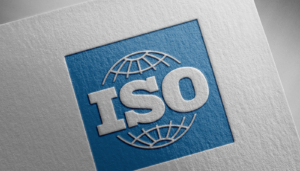In today’s competitive business environment, maintaining high-quality standards is paramount for success. Companies across industries strive to consistently deliver products and services that meet or exceed customer expectations. However, achieving and sustaining such levels of quality can be challenging without a structured framework in place. This is where ISO 9001 certification emerges as a game-changer, offering a roadmap for organizations to navigate the quality landscape effectively.
Understanding ISO 9001: The Foundation of Quality Management
ISO 9001 is the internationally recognized standard for Quality Management Systems (QMS). Developed and published by the International Organization for Standardization (ISO), this standard provides a systematic approach to managing processes and ensuring that products and services consistently meet customer requirements and regulatory standards.
At its core, ISO 9001 emphasizes the importance of a customer-centric approach, continuous improvement, and evidence-based decision-making. It outlines a set of requirements that organizations must fulfill to achieve certification, including:
- Establishing a robust quality policy and objectives.
- Implementing processes to identify, document, and address customer needs and expectations.
- Setting up a framework for monitoring and measuring performance metrics.
- Conducting regular internal audits and management reviews to ensure compliance and drive improvement.
The Benefits of ISO 9001 Certification
The advantages of obtaining ISO 9001 certification extend far beyond mere compliance. Here are some key benefits that organizations can derive from implementing and maintaining a QMS aligned with this standard:
- Enhanced Customer Satisfaction: By focusing on understanding and meeting customer requirements, ISO 9001 helps organizations improve the quality of their products and services, leading to increased customer satisfaction and loyalty.
- Improved Operational Efficiency: The standard promotes the adoption of efficient processes, clear documentation, and standardized procedures, which streamline operations, reduce errors, and minimize waste.
- Increased Market Opportunities: ISO 9001 certification serves as a powerful differentiator in the marketplace, signaling to potential customers, partners, and stakeholders that the organization is committed to quality and continuous improvement.
- Better Risk Management: By systematically identifying and addressing risks and opportunities, ISO 9001 helps organizations mitigate potential threats, such as product defects, supply chain disruptions, and regulatory non-compliance, while capitalizing on opportunities for innovation and growth. It can directly influence and reduce insurance premiums.
- Greater Employee Engagement: A well-implemented QMS fosters a culture of accountability, empowerment, and teamwork among employees, as they understand their roles in achieving quality objectives and contribute actively to process improvement initiatives.
- International Recognition and Credibility: ISO 9001 certification is recognized globally, facilitating access to international markets and enhancing the organization’s reputation for reliability and trustworthiness.
Overcoming Implementation Challenges
While the benefits of ISO 9001 certification are substantial, the path to implementation is not without its challenges. Some common hurdles that organizations may encounter include:
- Resource Allocation: Implementing and maintaining a QMS requires dedicated resources in terms of time, personnel, and financial investment. Securing buy-in from top management and allocating adequate resources are crucial for success.
- Complexity of Documentation: Developing the necessary documentation, including quality manuals, procedures, and work instructions, can be time-consuming and overwhelming. Organizations must strike a balance between thoroughness and practicality to avoid unnecessary bureaucracy.
- Resistance to Change: Introducing new processes and quality initiatives may face resistance from employees accustomed to existing ways of working. Effective change management strategies, including communication, training, and leadership support, are essential to overcome resistance and foster a culture of continuous improvement.
- Maintaining Momentum: Achieving ISO 9001 certification is a significant milestone, but the real challenge lies in sustaining the momentum and continually improving processes over time. Organizations must remain vigilant, conduct regular audits, and solicit feedback to identify areas for enhancement and innovation.
Success Stories: Real-World Examples of ISO 9001 Impact
Numerous organizations have experienced tangible benefits from implementing ISO 9001 and obtaining certification. Here are a few notable enterprise success stories across different industries:
- Toyota: The automotive giant credits ISO 9001 for its commitment to quality and continuous improvement, enabling it to deliver reliable vehicles that exceed customer expectations consistently.
- Samsung Electronics: As a global leader in consumer electronics, Samsung attributes much of its success to its adherence to ISO 9001 standards, which ensure the quality and reliability of its products across diverse markets.
- Siemens: The multinational conglomerate leverages ISO 9001 certification to maintain high standards of quality and efficiency in its operations, driving customer satisfaction and sustainable growth.
- Amazon: The e-commerce giant’s fulfillment centers worldwide adhere to ISO 9001 standards, ensuring consistency and reliability in order processing, packaging, and delivery, thereby enhancing the overall customer experience.
The Value of ISO 9001 Across Industries
ISO 9001 certification is not limited to any specific sector but is applicable across a wide range of industries, including manufacturing, healthcare, construction, hospitality, and professional services. Regardless of the nature of their business, organizations can benefit from adopting a structured approach to quality management and demonstrating their commitment to excellence through ISO 9001 certification.
In conclusion, ISO 9001 certification serves as a catalyst for business performance improvement, enabling organizations to enhance customer satisfaction, streamline operations, mitigate risks, and unlock new opportunities for growth. By embracing the principles of quality management outlined in this standard, companies can navigate the quality landscape with confidence, resilience, and a relentless focus on excellence.



